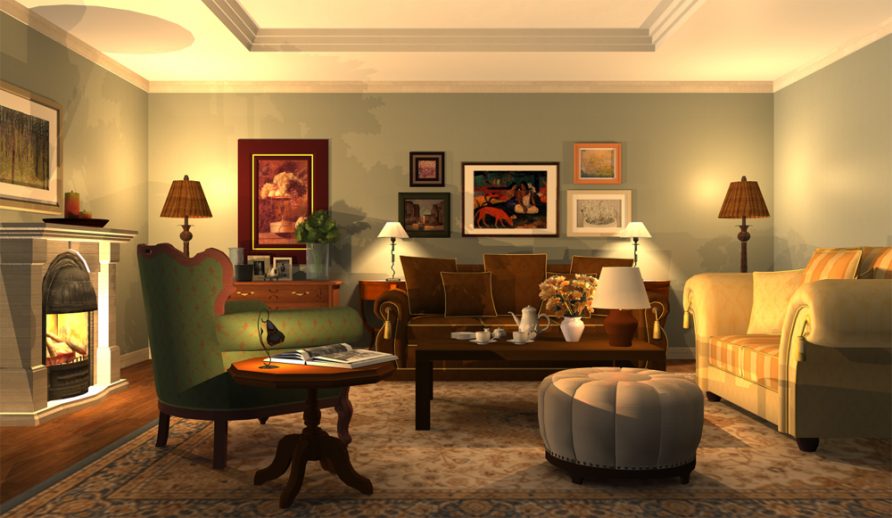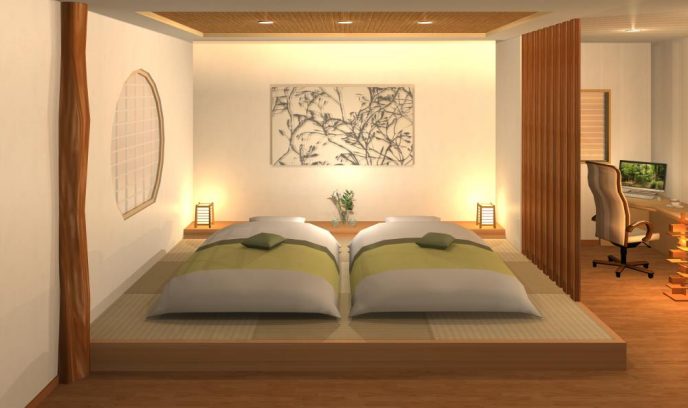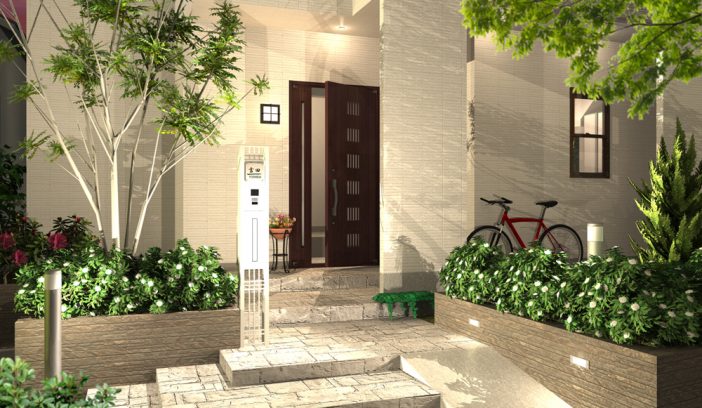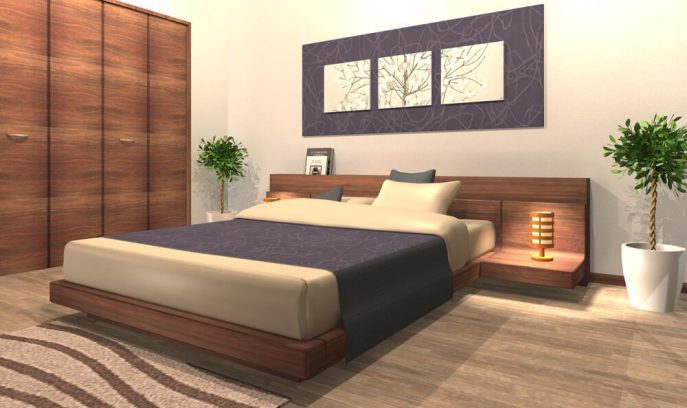The Japanese Home
Introducing unique architectural features and designs
influenced by Japanese culture.
Too bright? Room lighting brightness in Japan
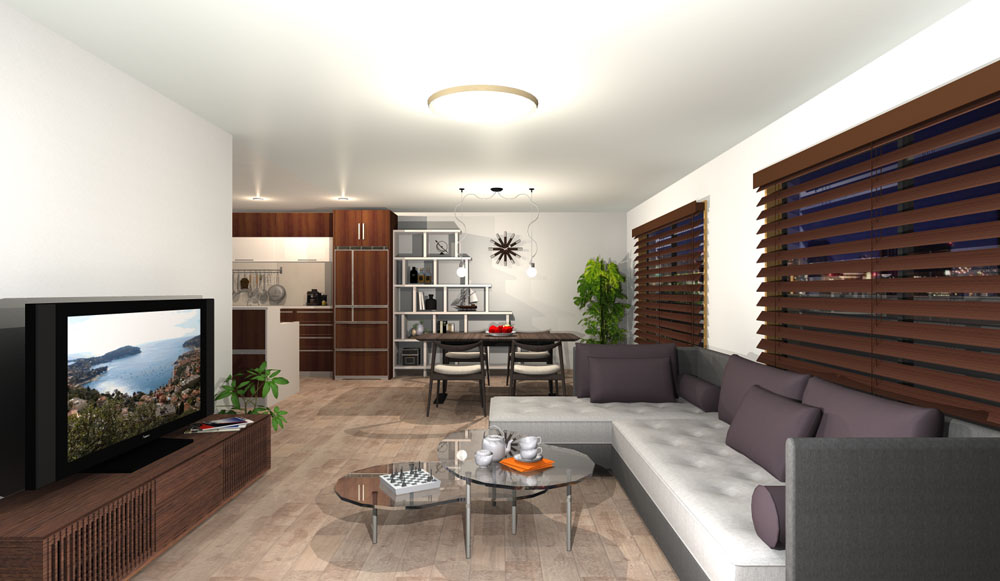
April 6. 2021
When traveling to Europe, Japanese people often get a tranquil feeling from retail stores, hotels, and residential homes.
It could be the interior elements and antique furnishings, or all of the European history associated with them.
However, I believe that the room lighting intensity also has something to do with it.
Indirect lighting and slightly darker room lighting often create a tranquil atmosphere.
On the other hand, I’ve heard quite often that overseas travelers feel that the room lighting in Japan is too bright.
Some people even complain of feeling restless, and that their eyes get tired after a while.
Is the room lighting of Japanese house actually brighter?
We don’t really notice it because we live here – but yes, room lighting is very bright in Japan!
How bright is the lighting of Japanese home?
In the illumination standard of JIS (Japanese Industrial Standards), more than 750 lux is the recommended brightness of the office lighting.
This is not only true in Japan, but office lighting is also normally set brighter in other countries as well.
Also, in general, the lighting is set brighter in public spaces such as supermarkets and train stations.
However, in Japan, the room lighting in residential is also set quite bright.
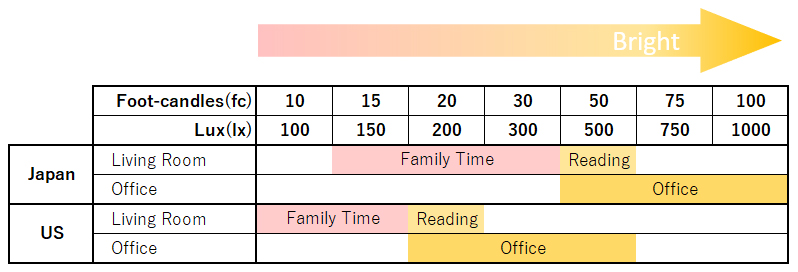
It has been determined that the black pupils of Asian people handle brightness better than the lighter pigmented, and therefore more sensitive, pupils of Caucasian people.
This explains why North America and European countries typically prefer warmer and lower intensity light bulbs for use in residential homes.
In Japan, people prefer to use the daylight white or daylight color for lighting.
There is some uniqueness to Japanese light fixtures
First would be the way fixtures are mounted.
The ceiling light is the most popular light fixture in Japan.
For Japanese houses, during the construction stage, a special ceiling light socket is already installed and wired in, to which the light fixture simply plugs into.
In most rooms, these are located in the center of the ceiling.
When moving into the Japanese house, the only you will need is to plug a ceiling light into all the sockets.
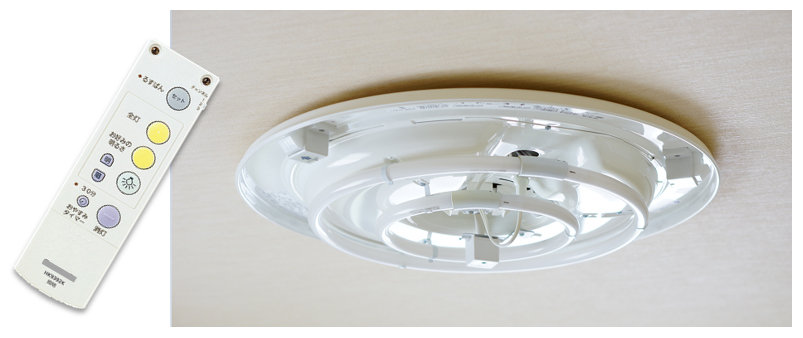
Typically, the light switch is already installed by the door and easily turns on and off the ceiling socket.
Some light fixtures feature pull-string operation or even remote control with timer and dimming functions.
Some people prefer these types for security reasons as you can control when the lights are on or off even when you are not at home.
The ceiling lights which are installed in the center of the room are generally very bright.
They are direct light and illuminate the entire room from a high position.
Recently, LED lighting is taking the place of the popular fluorescent lamp, providing even brighter lighting than before.
There are multiple factors why Japanese people use bright lighting for residential homes
After the world war II, during the high economic growth period in Japan, people’ s dream was to own a house.
A light fixture company capitalized on this dream and began promoting fluorescent lights with the catch phrase: “Brightness is a symbol of wealth”.
This statement took hold in the minds of the Japanese people.
In addition, people are under the belief that brighter light is better for your eyes, and often tell their children: “If you do not read books under bright lights, your eyesight will become worse”.
Because of this, Japanese people have grown up thinking that brighter is better.
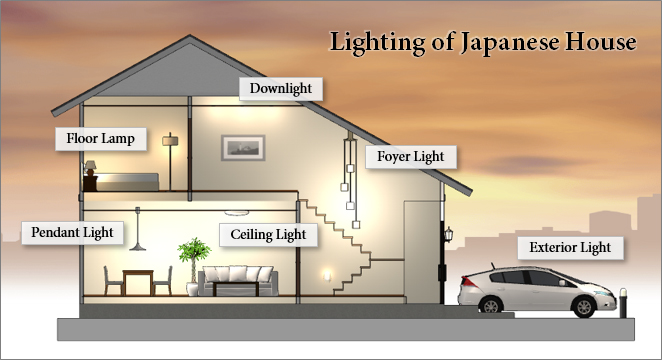
The tendency of modern Japanese house?
Until recently in Japan, a lighting fixture has been seen as merely a tool to brighten up a room.
It was not considered as an interior decorating item, or a tool to provides a certain style of atmosphere.
However, these days, people tend to choose a stylish lighting fixture to decorate a room or incorporate the use of indirect lighting with warm color tones to create a relaxed atmosphere.
However, bright ceiling lights are still quite popular in Japan, even though most people prefer the look of soft lighting depicted in interior decorating magazines and advertisements – often thinking to themselves “I would like to live in a house just like this”.


